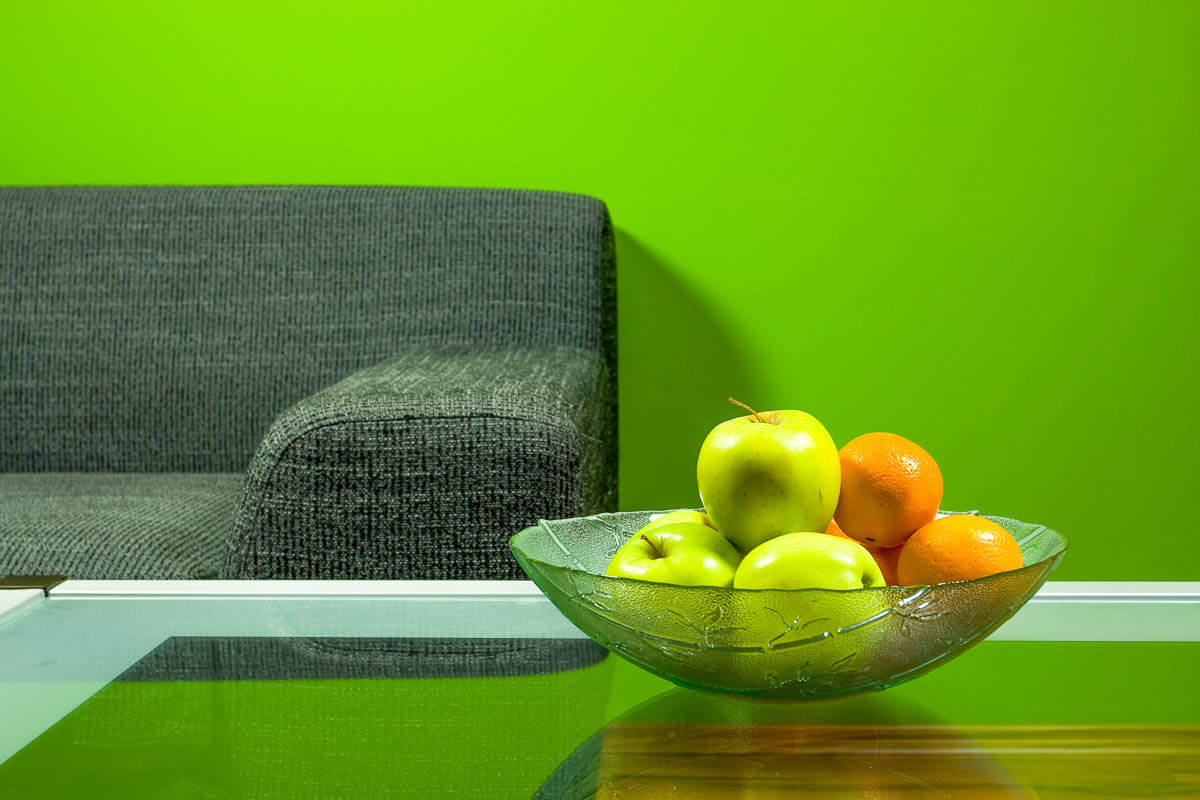

The color green is intimately tied to the human experience. The hue fills our world as the color of nature, and its particular wavelength has a fascinating relationship with our visual sense. The color can represent positive notions (peace and fertility) as well as negative ones (greed or envy). Although it’s considered a secondary color, because it’s a mix of both yellow and blue primary colors, green is maybe the most important hue in the visual spectrum — and these five mind-blowing facts explain why.
Human Eyes Are Most Sensitive to the Green Wavelength of Light

Electromagnetic radiation comes in a variety of types, including radio waves, gamma rays, and visible light. The human eye can perceive wavelengths around 380 to 740 nanometers (nm), also known as the visual light range. The size of the wavelength determines the color we see: For example, at 400 nm our eyes perceive the color violet (hence the name “ultraviolet” for wavelengths directly under 400 nm), whereas at 700 nm our eyes glimpse red (but can’t see the “infrared” wavelengths just beyond it). In the middle of this spectrum of visible light is the color green, which occupies the range between 520 to 565 nm and peaks at 555 nm. Because this is right in the middle of our visual range, our eyes are particularly sensitive to the color under normal lighting conditions, which means we can more readily differentiate among different shades of green. Scientists have also found that the color green positively affects our mood in part because our visual system doesn’t strain to perceive the color — which allows our nervous system to relax.
The Color Green Has Meant Many Things Throughout History

Today, the color green is associated with a variety of feelings and social movements. Turning a shade of green can indicate nausea, but you can also become “green” with envy. Green is closely associated with money and capitalism, while also embodying aspects of nature and the environmentalist, or “Green,” movement.
However, these cultural definitions have changed over millennia, and have different associations in different parts of the world. For example, in ancient Egypt, green was often linked with both vegetation and death, and Osiris (god of fertility and death) was often depicted as having green skin. These days, green is prevalent throughout the Muslim world — adorning the flags of Muslim-majority nations such as Iran and Saudi Arabia — because it was supposedly the prophet Mohammad’s favorite color. Many African nations also include the color green in their flags to represent the natural wealth of their continent, and Confucius believed green (more specifically jade) represented 11 separate virtues, including benevolence, music, and intelligence.
Hollywood Uses Green Screens Because of Human Skin Tones

If you’ve seen any big-budget Hollywood film, it probably used some variety of green screen-enabled special effects. In fact, some version of green screen technology, also known as “chroma keying,” has been around since the early days of film. The reason why screens are green is actually pretty simple — human skin is not green. When a camera analyzes chrominance, or color information, it can easily separate green (or blue) from the rest of the shot so that a video backdrop can be inserted.
However, the technology isn’t foolproof, as green clothes can blend in with backgrounds. (That’s why meteorologists don’t wear green on St. Patrick’s Day.) Because of this deficiency, among other reasons, some productions are shifting to high-tech LED panels to recreate otherworldly locations.
The Color Green May Have Killed Napoleon Bonaparte

In 1775, German Swedish chemist Carl Wilhelm Scheele made a green-hued pigment that eventually bore his name — Scheele’s green. Unfortunately, the pigment was extremely dangerous, since it was made with arsenic. However, its rich hue ignited a craze for green, and the pigment was used in wallpaper, clothing, and even children’s toys. In fact, some historians believe that Napoleon Bonaparte died from the Scheele’s green pigment embedded in the wallpaper of his bedroom on the island of St. Helena.
However, that wasn’t the end of green’s deadly reputation. Decades later, impressionist painters — such as Paul Cézanne and Claude Monet — used a green pigment called Paris green that was highly toxic, if less dangerous than Scheele’s green. Experts suggest that the chemical could have contributed to Cézanne’s diabetes and Monet’s blindness.
No One Is Sure Why the Backstage Room Is Called a “Green Room”

One early reference to a “green room” in the sense of a waiting room appears in The Diary of Samuel Pepys, the famed journal kept by a civil servant in 1660s London. Pepys mentions a “green room” when going to meet the royal family — likely a reference to the color of the walls. A “green room” was then tied to the theater in English playwright Thomas Shadwell’s 1678 comedy A True Widow, which includes the line: “Selfish, this Evening, in a green Room, behind the Scenes.” However, Shadwell doesn’t mention why it was called a green room. One notable London theater did have a dressing room covered in green fabric, but other theories behind the term reference actors going “green” because of nervousness, amateur or young (aka “green”) actors, or a place where early actors literally waited “on the green” lawns of outdoor theaters — among many other ideas. It’s possible we’ll never know the origin of the phrase for sure.
